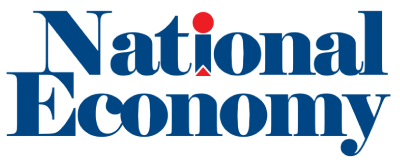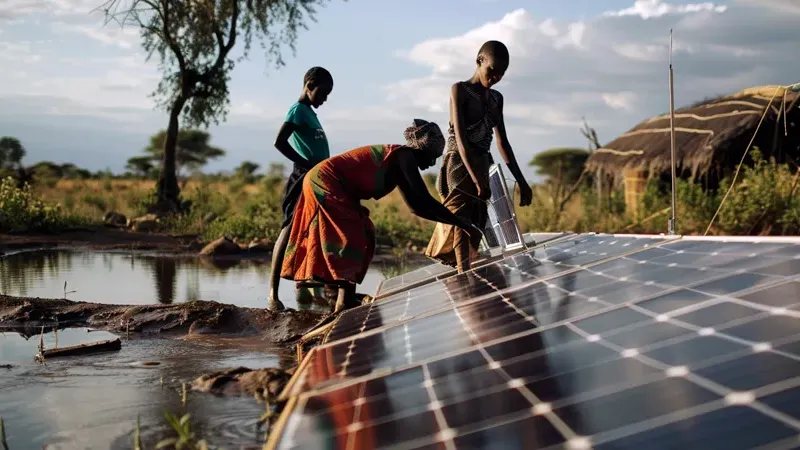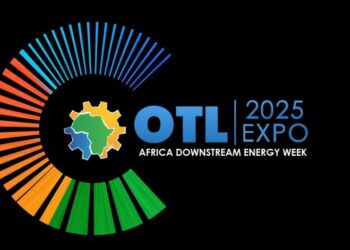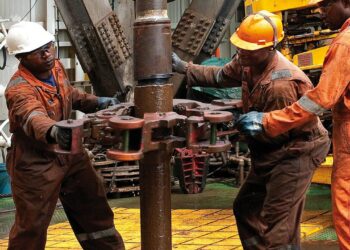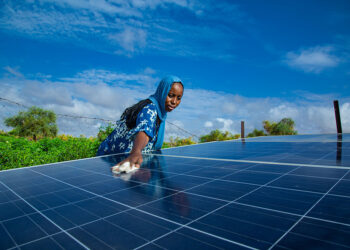The International Energy Agency (IEA) projects another record year for renewables. In its “Renewables 2025” report released on October 7, the agency forecasts that new global capacity will exceed 750 GW, driven mainly by solar power.
At the same time, the think tank Ember reports that renewable energy produced more electricity than coal during the first half of 2025. Together, the findings confirm a structural shift in the global energy mix, with solar and wind now leading power generation growth.
In 2024, the world added 685 GW of renewable capacity, up 22 per cent from 2023. The IEA expects additions to surpass 750 GW in 2025 under its main scenario, and 840 GW in an accelerated one. Solar will continue to dominate growth, while wind will contribute between 139 and 155 GW of new capacity.
These projections notwithstanding, the Agency, which works with countries around the world to shape energy policies for a secure and sustainable future, reveals that 730 million people lack electricity with 80 of the population residing in Sub-Saharan Africa.
The agency reports that regional access stagnates despite new connections and global progress, as it urges reforms, financing to break decade-long energy poverty cycle
In a data the agency released it confirmed that some 730 million people worldwide remained without access to electricity in 2024.
Sub-Saharan Africa accounts for more than 80 per cent of that total, with around 590 million people still living without power—a figure that has barely changed in over a decade.
While about 6.8 million new connections were made in 2024, rapid population growth in the region offset much of the progress. As a result, the total number of people without electricity fell by only 4 million. High debt levels and shrinking international financing continue to slow electrification efforts in many countries.
The figures highlight long-term stagnation.
In 2010, roughly 581 million people in Sub-Saharan Africa lacked electricity—almost the same as today—making it the only region where the number of people without power has barely changed in more than ten years.
The trend stands in sharp contrast to Asia, where 98 per cent of the population now has access to electricity. The number of people without power there fell from 761 million in 2010 to 90 million in 2024.
According to the IEA, the disparity underscores the need to strengthen national policies, expand long-term financing, and lower household electricity costs across Sub-Saharan Africa. Without targeted action and major reforms, the region risks remaining the world’s leading energy-poverty hotspot beyond 2030, hampering its industrialization and economic growth.
The shift to solar suggests a revolutionary possibility for countries like Nigeria: the chance to industrialise and grow without following the high-emissions path that has worsened global warming.
This represents a massive change, both in the source of electricity, and in who can generate and use it. Because solar power can be produced anywhere, by anyone with a solar panel, “it gives power directly to people,” said Femi Oye, co-founder of OneWattSolar and an advocate for solar power in Nigeria.
Nigeria is a stark example of how transformative that shift in power could be.
As Africa’s top oil and gas producer, the country is rich in the very fossil fuels that have traditionally kept the world’s lights on. But its power infrastructure is in disarray. Some 40 per cent of the country’s 230 million people are not even connected to the national grid. And those who do have a connection are hardly better off.
In 2024, alone, the national grid collapsed more than 10 times and unreliable electricity has profound ripple effects here.
Apart schools, healthcare facilities struggle to keep lights on and equipment running, so vaccines spoil and fewer women get medical care during their pregnancies than in neighbouring countries. Without electricity to provide light in the evenings, students in Nigerian boarding schools study about half as much as their peers in China.
In addition local farmers lose enough food to feed millions of people each year, simply because they have no way to keep their products cool on the way to market. Overall, the World Bank estimates that unreliable electricity costs the Nigerian economy about $25 billion every year.
To fill the gaps, Nigerians have long relied on diesel and petrol generators that pollute the environment and produce noise and night, spewing thick fumes. Nigerians spend $14 billion annually on running these belching machines, which in the city of Lagos alone release the equivalent of 39 metric tons of of CO₂ each year – as much as about 8.5 million cars, according to reports.
The lack of reliable electricity severely impacts education and businesses in Nigeria.
Globally, those figures are small change and as a continent, Africa accounts for less than 4 per cent of the world’s emissions. But its population is growing rapidly, creating increased pressure for development – and the energy that powers it. Between 1990 and 2018, fossil-fuel related greenhouse gas emissions grew more than twice as fast in Africa as in the rest of the world.
The owners of Nigeria’s generators are also buffeted by forces beyond their control.
The New Shift And Expectations
The country’s long-standing struggle with unreliable electricity appear to be moving into a decisive new phase, as financing begins to flow for projects under the World Bank–supported Distributed Access through Renewable Energy Scale-up (DARES) programme.
Designed to deliver clean, decentralised energy to millions, DARES marks one of Africa’s boldest attempts to close the continent’s power gap through renewable innovation.
Under the scheme, 17.5 million Nigerians are expected to gain access to reliable electricity through 1,500 solar mini-grids and 1.5 million solar home systems. The approach prioritises sustainability and inclusivity linking public ambition with private expertise to drive measurable progress in energy access.
To propel the implementation, the International Finance Corporation (IFC)—the World Bank’s private sector arm—has unveiled a $200 million debt platform to support Renewable Energy Service Companies (RESCOs) tasked with developing and managing new infrastructure.
This platform reflects a growing belief that private capital, when effectively de-risked, can unlock large-scale transformation in Africa’s energy landscape. IFC’s first round of financing targets companies with proven capacity and innovative business models, creating a balance between local entrepreneurship and global expertise.
Among the initial beneficiaries are StarTimes Smart Energy, an offshoot of the Chinese media giant, which intends to invest its $20 million IFC facility in 95 mini-grids (13.1 MW)and 200,000 solar home systems, extending its influence from media to sustainable energy.
Also, the Darway Coast Nigeria, a homegrown developer with a record of 20 existing mini-grids, secured $25 million in combined funding from IFC and Norway’s NorFund to expand its footprint with 63 new sites (24 MW).
In addition, Prado Power, known for merging renewable energy with agribusiness and women’s empowerment initiatives, is leveraging $10 million in IFC and NorFund loans to build 21 mini-grids (9.6 MW), while Husk Power Systems, supported by Canadian development financing, is channeling $5 million into the construction of 108 hybrid solar mini-grids in northern Nigeria.
Central to IFC’s approach is blended finance—a model combining commercial loans with concessional capital from development funds.
Each package includes a standard market-rate loan alongside a subsidized tranche that reduces overall borrowing costs and improves project viability.
This mechanism helps offset perceived risks in high-potential but underdeveloped markets like Nigeria, encouraging broader participation from private investors and financial institutions. For developers like Darway Coast and StarTimes, concessional financing accounts for about 3% of total project cost, yet it plays an outsized role in attracting co-investments and sustaining profitability.
While financing drives construction, Odyssey Energy Solutionsprovides the digital foundation ensuring every project remains transparent and trackable. Its platform—recently backed by $7.5 million from British International Investment (BII)—acts as DARES’ central nervous system.
Through Odyssey’s interface, developers submit proposals, report progress, and receive disbursements from the Rural Electrification Agency (REA), which oversees the $200 million DARES Fund. The system offers real-time data on project milestones, grant utilization, and operational metrics, creating an unprecedented level of accountability in Nigeria’s energy sector.
By merging data-driven oversight, innovative financing, and entrepreneurial execution, Nigeria’s DARES programme represents more than a national initiative—it is a test case for how Africa can leapfrog traditional grid systems through decentralized, technology-enabled power.
If execution matches ambition, DARES could become a continental model for clean infrastructure partnerships, proving that with the right blend of policy, finance, and digital coordination, the lights can finally come on—sustainably, inclusively, and at scale
Nigeria’s $3.2 million energy project could serve as a harbinger for other emerging markets. It focuses on solar mini-grids, which distribution companies long dismissed as too risky to integrate into their networks. But that’s changing now that the Global Energy Alliance for People and Planet stepped in with seed capital and hands-on technical expertise to absorb the initial risks.
The pilot, driven by the solar grid developer Husk Power from the United Capital Infrastructure Fund, has been successful.
As such, regulators have adjusted their course, requiring utilities to source part of their supply from renewable sources.
The World Bank committed $127 million to expand the approach, along with $50 million dedicated to productive-use technologies like irrigation pumps and cold storage units (refrigeration for perishables). What was once a fringe idea is now becoming mainstream in Nigeria’s energy system, showing how modest, well-placed interventions can trigger systemic change.
Nigeria’s story is more than an anecdote; it serves as a blueprint for Africa and the Global South. Small, well-organized interventions can unlock market logjams, attract large-scale finance, and generate livelihoods while cutting emissions.
In a continent where the United Nations estimated in 2023 that 600 million people still lack electricity and the youth population is expected to grow by 138 million over the next 25 years, the stakes are incredibly high. With risk-absorbing funding, aligned policies, and local participation, universal energy access moves from being an aspiration to a realistic goal.
Nigeria, typically illustrates the broader promise of a partnership-driven approach. Across Africa, the Global Energy Alliance has contributed $4.2 billion to 49 projects that are either deployed or ready for deployment. The goal is to unlock capital—to prove the pilots’ effectiveness and attract follow-on investment.
These initiatives are expected to improve access for 31 million people, support 727,000 jobs and livelihoods, and avoid 88 million tons of CO₂ emissions. The Alliance’s work supports Mission 300, a joint initiative of the World Bank Group and African Development Bank, aimed at connecting 300 million Africans to electricity by 2030.
Mini-grids — small power stations usually supplying rural communities — are not new. But the drop in solar technology costs over a decade has prompted a growth in clean energy minigrids with rural Africa poised to benefit the most. Nearly 600 million Africans live without electricity access, and in Nigeria alone that figure is 90 million or around 40 per cent.
And while Africa may have the most potential to generate solar power, according to the IEA, the continent lags behind installed capacity.
The Africa portfolio exemplifies the Alliance’s core philosophy: combining foundational investment with technical expertise, embedding measurable outcomes from the outset, and aligning projects with national priorities. In Nigeria, for instance, funding was coupled with hands-on support within utilities to demonstrate that mini-grids could operate commercially. That helped regulators and private investors understand that small-scale renewable energy could be placed into national energy systems.
“For Africa, the stakes could not be higher: 600 million people in Sub-Saharan Africa still live without electricity, the largest concentration of energy poverty anywhere in the world. Without urgent action, millions will be locked out of the energy-enabled economy,” Carol Koech, vice president, Africa, for the Global Energy Alliance, explained said.
Since its launch at COP26 in 2021, the Global Energy Alliance has provided $503 million in seed capital, helping unlock $7.8 billion in investments across 137 projects in more than 30 countries. The results are significant: improving energy access for 91 million people, creating or supporting 3.1 million jobs, and avoiding 296 million tons of CO₂ emissions.
While Africa’s $4.2 billion portfolio holds the largest regional share, the Alliance also operates in India, where it has invested $1 billion in 26 projects, providing access to electricity for 49 million people. It is also active in Latin America and the Caribbean, where it has invested $599 million in 22 projects, supplying power to 7 million people. Additionally, it is present in Southeast Asia, where it has invested $1.7 billion in 37 deals, providing electricity to around 4 million people.
This shows that its methods are effective. However, the main points are that country-led initiatives work best—those aligned with national policies and able to gain regulatory approval. Funding should also be paired with technical expertise to ensure the projects meet their goals.
If properly executed, the investments can be leveraged successfully. “This is possible because every dollar of our $503 million in seed capital has helped unlock fifteen times more in total investment—$7.8 billion to date,” Woochong Um, chief executive of the Alliance, was quoted as saying in a report.
Not every initiative that promises to “unlock” billions succeeds in practice. Development finance is littered with well-intentioned pilots that never scale. In fact, some impact statements blur the line between pledges and actual results—presenting announced funds as if they are currently producing measurable outcomes. In many cases, projects remain in the planning or early pilot stages, so the reported results are aspirational rather than realized.
Investors are justified in their caution, as emerging markets often face regulatory and political uncertainty, weak local balance sheets, and currency fluctuations.
What sets Nigeria apart is that it has surpassed the credibility threshold. The $3.2 million seed capital was intentionally structured to de-risk projects, embed technical expertise, and establish a regulatory-friendly pipeline. This prompted the Nigerian Electricity Regulatory Commission to mandate utilities to source renewables, thereby changing the market dynamics. Within two years, $177 million in follow-on financing from the World Bank and other partners flowed into the sector.
The Alliance’s sequence—de-risk, demonstrate, and craft policy before scaling—differentiates these results from less credible promises.
“Only one-fifth of global energy investment flows to emerging markets and developing economies. Redirecting even a fraction more could drive faster connections, stronger local economies, and real momentum toward a just energy transition and universal energy access,” says the Alliance’s Koech.
There are plenty of companies that see this opportunity and are trying different approaches to bring mini-solar grids to the Nigerian market. Prado Power is one example, building out solar grid options in Mbiabet Esieyere and Mbiabet Udouba. Chinese energy companies already heavily invested similiar projects across Algeria and South Africa and Nigeria could be the the continent’s next solar power hot spot.
Nigeria demonstrates how small yet strategic actions can transform regulatory environments, attract investment, and connect electricity access to people’s livelihoods. The outcome doesn’t just increase power supplies; it also generates energy that supports irrigation, cold storage, and small businesses—producing tangible economic benefits alongside climate advantages.
If this model works in Nigeria—a country with the world’s largest energy access gap—it can be replicated across the developing economies worldwide, providing a blueprint for a fair, inclusive, and sustainable energy future.
